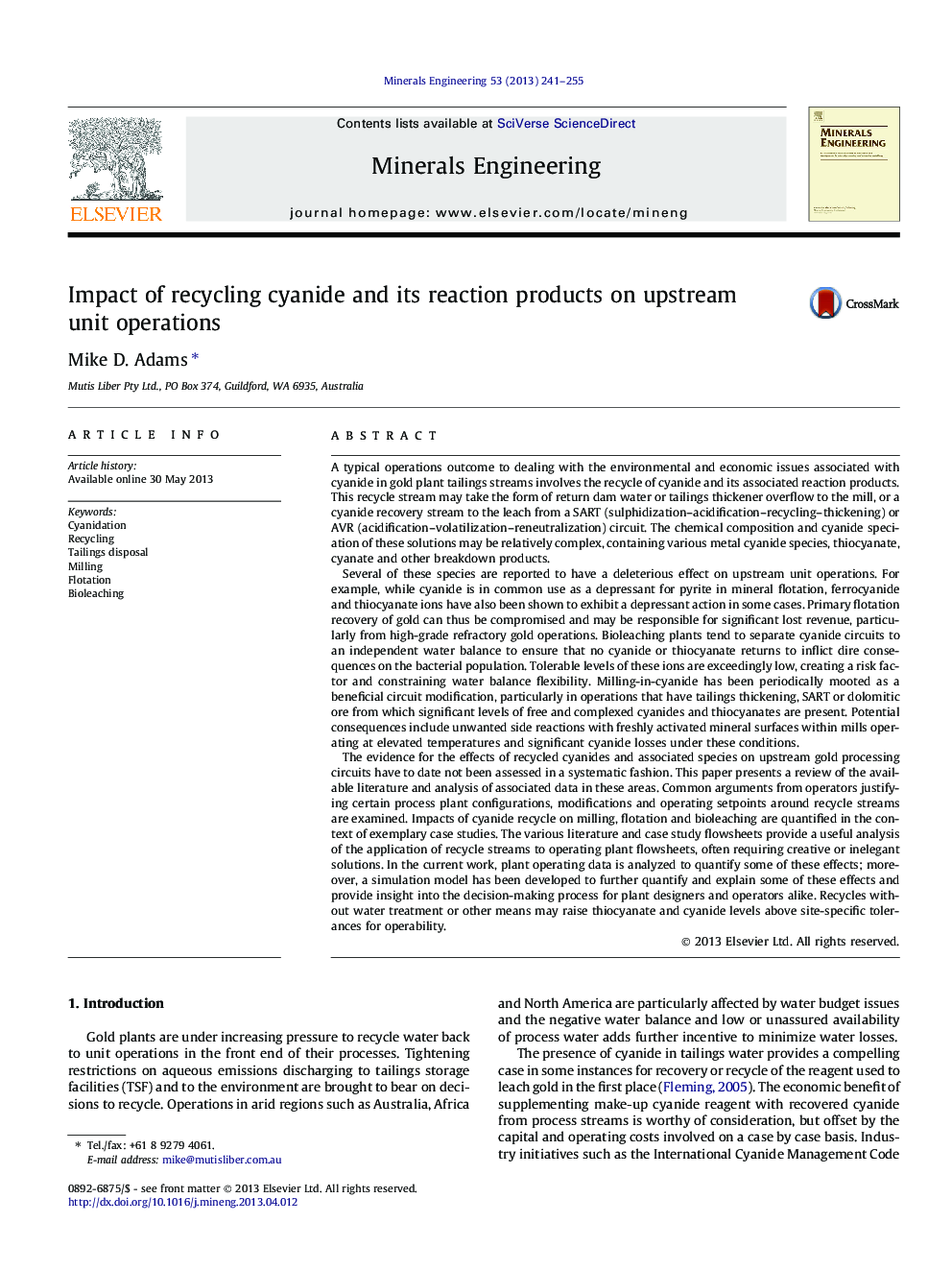| کد مقاله | کد نشریه | سال انتشار | مقاله انگلیسی | نسخه تمام متن |
|---|---|---|---|---|
| 233398 | 465337 | 2013 | 15 صفحه PDF | دانلود رایگان |

• Impact of recycling cyanides to milling, flotation and bioleaching is examined.
• Milling-in-cyanide results in cyanide losses from recycles and recovery processes.
• Cyanide, ferrocyanide and thiocyanate can depress sulphide mineral flotation.
• Bioleaching plants do not tolerate cyanide or thiocyanate at practical levels.
• Modeling shows that rapid buildups of copper and thiocyanate can occur.
A typical operations outcome to dealing with the environmental and economic issues associated with cyanide in gold plant tailings streams involves the recycle of cyanide and its associated reaction products. This recycle stream may take the form of return dam water or tailings thickener overflow to the mill, or a cyanide recovery stream to the leach from a SART (sulphidization–acidification–recycling–thickening) or AVR (acidification–volatilization–reneutralization) circuit. The chemical composition and cyanide speciation of these solutions may be relatively complex, containing various metal cyanide species, thiocyanate, cyanate and other breakdown products.Several of these species are reported to have a deleterious effect on upstream unit operations. For example, while cyanide is in common use as a depressant for pyrite in mineral flotation, ferrocyanide and thiocyanate ions have also been shown to exhibit a depressant action in some cases. Primary flotation recovery of gold can thus be compromised and may be responsible for significant lost revenue, particularly from high-grade refractory gold operations. Bioleaching plants tend to separate cyanide circuits to an independent water balance to ensure that no cyanide or thiocyanate returns to inflict dire consequences on the bacterial population. Tolerable levels of these ions are exceedingly low, creating a risk factor and constraining water balance flexibility. Milling-in-cyanide has been periodically mooted as a beneficial circuit modification, particularly in operations that have tailings thickening, SART or dolomitic ore from which significant levels of free and complexed cyanides and thiocyanates are present. Potential consequences include unwanted side reactions with freshly activated mineral surfaces within mills operating at elevated temperatures and significant cyanide losses under these conditions.The evidence for the effects of recycled cyanides and associated species on upstream gold processing circuits have to date not been assessed in a systematic fashion. This paper presents a review of the available literature and analysis of associated data in these areas. Common arguments from operators justifying certain process plant configurations, modifications and operating setpoints around recycle streams are examined. Impacts of cyanide recycle on milling, flotation and bioleaching are quantified in the context of exemplary case studies. The various literature and case study flowsheets provide a useful analysis of the application of recycle streams to operating plant flowsheets, often requiring creative or inelegant solutions. In the current work, plant operating data is analyzed to quantify some of these effects; moreover, a simulation model has been developed to further quantify and explain some of these effects and provide insight into the decision-making process for plant designers and operators alike. Recycles without water treatment or other means may raise thiocyanate and cyanide levels above site-specific tolerances for operability.
Figure optionsDownload as PowerPoint slide
Journal: Minerals Engineering - Volume 53, November 2013, Pages 241–255